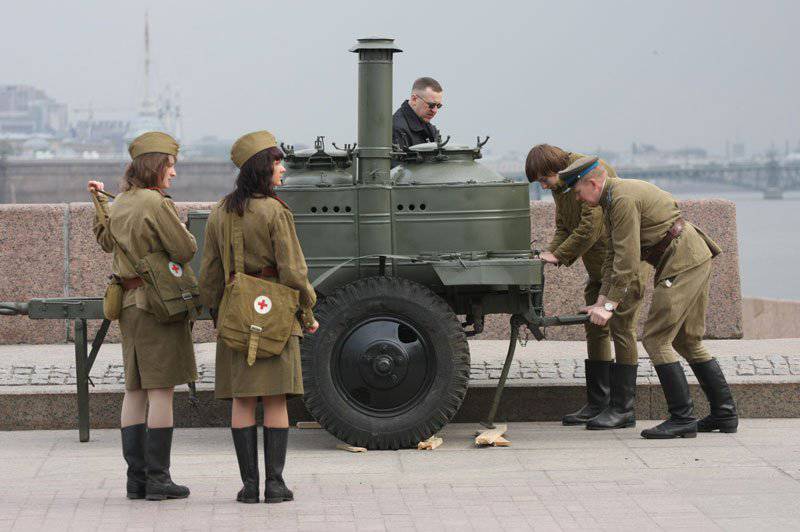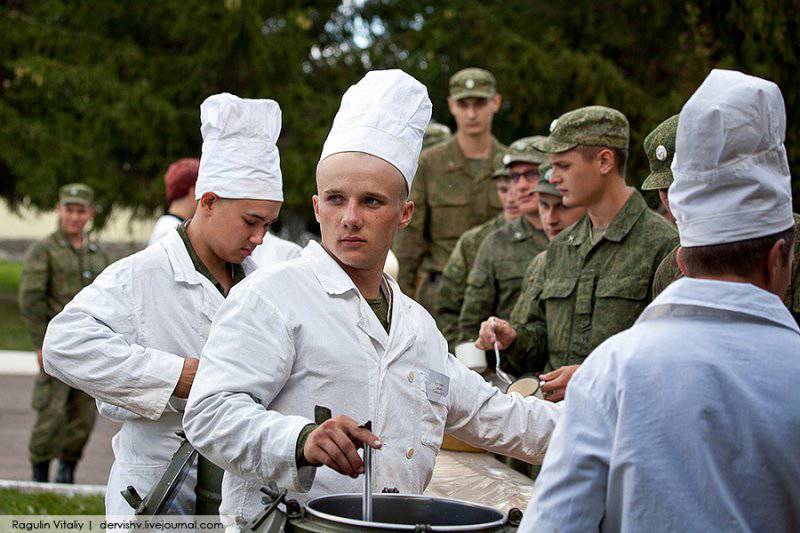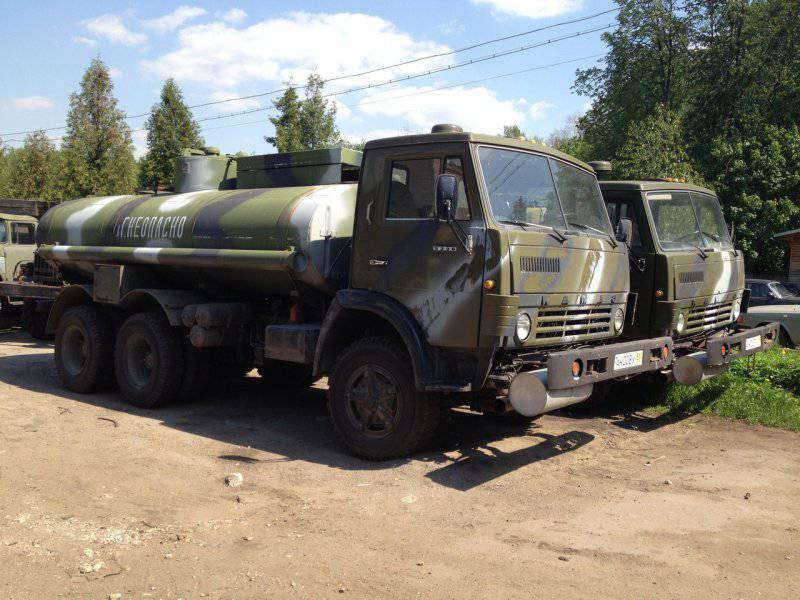August 1 marks Day of the RF Armed Forces
Rear services play a huge role in military life. It is no coincidence that logistic support arose simultaneously with the birth of the first armies of the then slave-owning states. Already in the armies of ancient Rome, the first rear services appeared that resolved the supply of troops weapons, clothes, gave soldiers a salary. For repair and production of weapons and other items of military equipment in the Roman military camps were special workshops. Food was either purchased from the population, or levied as a tribute from the peoples conquered by Rome.
Small stocks of food, weapons, shoes and clothing were transported in special carts. For these purposes, vehicles allocated by the population at the request of the commanders, pack animals, and waterborne vehicles. At the same time, great importance was attached to the construction of roads, bridges, as well as the search for sources of water in the path of troop movement. It was also at that time that the quartermaster and treasurers, the persons who were involved in fortification and road works, the quartering of troops and the construction of camps first appeared.
In Russia, the rear service originated in the 1700 year. At the very beginning of the 18th century, together with the creation of a regular army in the country, Emperor Peter I created two services: the commissariat — for financing, providing handguns, clothing, transports, and food — to provide troops with fodder and food. Permanent business units appeared in the Russian army regiments — permanent carts with stocks of various material resources: meat was procured, crackers were dried, bread was baked, repairs and tailoring of uniforms and footwear were done. Also in the XVIII century in Russia there were hospitals and hospitals.
The decree of the emperor “On the management of all grain reserves of military people to Okolnichy Yazykov, with the name of this general-Proviant” was signed 18 February 1700 of the year. At the same time, the first independent body in charge of supplying the army, the Proviantsky order, appeared in our country. This order was in charge of the supply of cereals, bread and grain fodder. A food order provided a centralized food supply, which, as is well known, is still one of the main types of material support for army units, soldiers will not fight on an empty stomach.
In the future, the rear service has been continuously developed. As an independent species or branch of the armed forces, it stood out 1 August 1941 of the year. It was on this day that the Supreme Commander Joseph Stalin signed the order of the USSR Non-Profit Organization under the number 0257 “On the organization of the Main Logistics Department of the Red Army”. The Logistics Directorate united in itself the headquarters of the Logistics Chief, the inspection of the Chief of Logistics of the Red Army, the road administration and the VOSO administration. A new post also appeared in the army - the head of the rear of the Red Army, to whom, in addition to the General Directorate of the Rear of the Red Army, the Fuel Supply Directorate, the Central Directorate Directorate, and the Sanitary and Veterinary Directorate were also subordinate.
The unification of the whole set of medical, supply and transport structures under one roof made it possible to bring the very difficult logistics process to the current army to a new level. The posts of the rear commanders were also introduced on all fronts and in all armies. The first head of the rear of the Red Army was appointed Lieutenant-General of the quartermaster service A. V. Khrulev, Deputy People's Commissar of Defense of the USSR. The chief of his staff was appointed Major General P. V. Utkin.
Currently, the rear of the Russian Armed Forces plays the role of an integral part of the defense potential of our country, and also serves as a link between the Russian economy and military units that consume the products they produce. This is a fairly well-coordinated and well-functioning mechanism. It includes the rear headquarters, 9 central and main directorates, 3 individual services, as well as command and control bodies, troops and organizations of central subordination, rear structures of various types and branches of the armed forces, military districts and fleets, associations, separate formations and military units.
Today, the rear structures of the Armed Forces of the Russian Federation provide with everything necessary not only soldiers and officers of the Russian army, but also the entire range of military equipment, organize the life support of military garrisons and carry out other activities in accordance with their tasks. More than 300 years have passed since the establishment in Russia of structures responsible for centralized logistical support for troops. During this time, the rear services of the army and fleet continuously developed and improved in parallel with how improved methods and means of warfare. Today, the rear services is a reliable structure that ensures the combat readiness of the Russian armed forces.

The Great Patriotic War was one of the most glorious pages in the history of the rear of the Armed Forces. During the war years, the rear service made a worthy and tangible contribution to the common victory. The soldiers of the Red Army in the short term in a difficult time for the whole country were able to deploy a clear system of comprehensive supply of the army and navy, to compensate for the losses of the first months of the war, which contributed to the conduct of dozens of strategic and more than a thousand army operations during the war. For the exemplary performance of command assignments, initiative, personal courage, many workers in the rear were awarded high government awards. More than a hundred of them were awarded the highest title - Hero of the Soviet Union and Hero of Socialist Labor.
Without strong rears it is impossible to imagine a single victory. History knows many examples of this. Sometimes even won battles and a whole scattering of brilliant tactical operations could not lead to a long-awaited victory due to poor organization of rear support. When the troops suffered from interruptions in the supply of ammunition, food, fuel, lack of replenishment.
Based on materials from open sources


Information